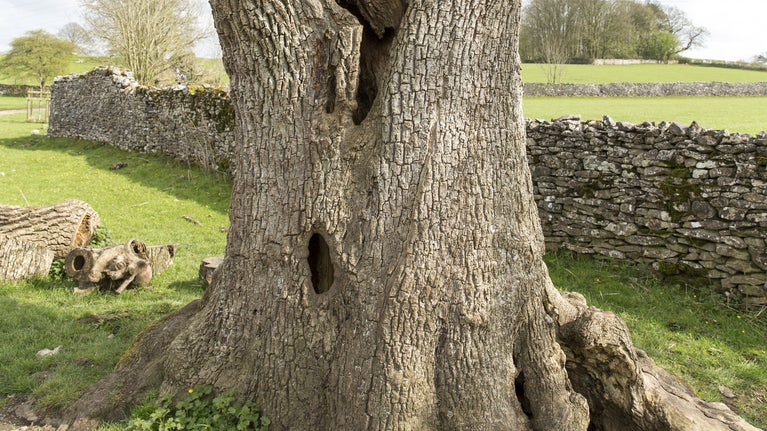Sizergh's Ancient Tree Trail

A short walk through historic parkland to discover some of Sizergh's most impressive ancient trees.
Total stages: 10
Total stages: 10
Start point
Postcode LA8 8DZ, Grid Reference SD 49721 87867
Stage 1
From the car park, take the gate out of the northern end of the car park. You'll cross a bridleway, before going through another gate and out into a field, with the path running diagonally across the field.
Stage 2
At the next gate there is a bench. Go through the gate and continue on the surfaced path through the field. At the top of the field is a gate which takes you around the edge of a small farmyard.
Stage 3
The path continues through a narrow strip of woodland called Rash Spring. The path has a gentle upward gradient, which gets steeper towards the end. As you enter the wood, you'll see the first important trees, a beech and an oak.

Stage 4
Leave Rash Spring wood through a gate and emerge into Holeslack farm yard. On your right is the old summer house, built to look like a lime kiln. A Pitmaston Duchess pear tree is somehow thriving, growing at what looks like an impossible angle. The path bears left round the barn and left again, heading downhill towards an orchard.

Stage 5
As you enter the orchard, an ice house is within the retaining wall of the farmhouse garden on your right hand side. Follow the path around the edge of the orchard and through a gate into Holeslack Wood. On your left before the gate is a large pear tree, a Bergamont D'Automne. There's an excellent view back towards the House from the orchard.
Stage 6
The path continues through Holeslack Wood with a gentle descent. There is a log bench close to where you enter the wood. At the next bench, the accessible path turns left and heads downhill. To visit the Pheonix Yew, take the right next to the bench instead, heading up hill from around 50m, and then return to the accessible trail. There are some really impressive ancient trees throughout the wood and the ground flora is a delight through the flowering season.
Stage 7
Returning to the accessible trail, the path heads down hill. Around 25m downhill from the junction is a large yew tree. Opposite that, on the right hand side, is a steep, narrow, unsurfaced path that heads uphill to the county champion yew tree. This tree is surrounded by a rope fence, so please admire the tree from behind the rope to protect the tree from trampling and root compaction. From here, return back down hill to the accessible path.
Stage 8
As you reach the bottom of Holeslack Wood, you'll pass under some large spruce trees, which are remnants of previous management. We're reducing the non-native conifer cover in our woodlands, but these few trees have been retained as they add some diversity to the woodland. Amongst the spruce there is an optional left turn, taking you onto a small board walk and willow screen overlooking the pond. Return to the main path and continue on the path as it flanks the pond and emerges out into Flashbank, which is part of the historic deer park. On the other side of the gate on Ashbank Lane is an ancient ash tree, which has significant hollowing.
Stage 9
The path takes a left turn very close to a large, hollow ash tree pollard. The path then goes through a high gate hung from massive limestone stoops, heading uphill on this historic track which is flanked by a wide hedge and stone wall. At the brow of the hill is a perch bench for a well-deserved rest.
Stage 10
The final section of the walk heads back downhill to the castle, passing two veteran sweet chestnuts, which were planted by Cecilia Strickland in 1780 from seeds collected in Versailles, making them 240 years old.
End point
Sizergh Castle car park, grid ref: SD498878
Trail map
